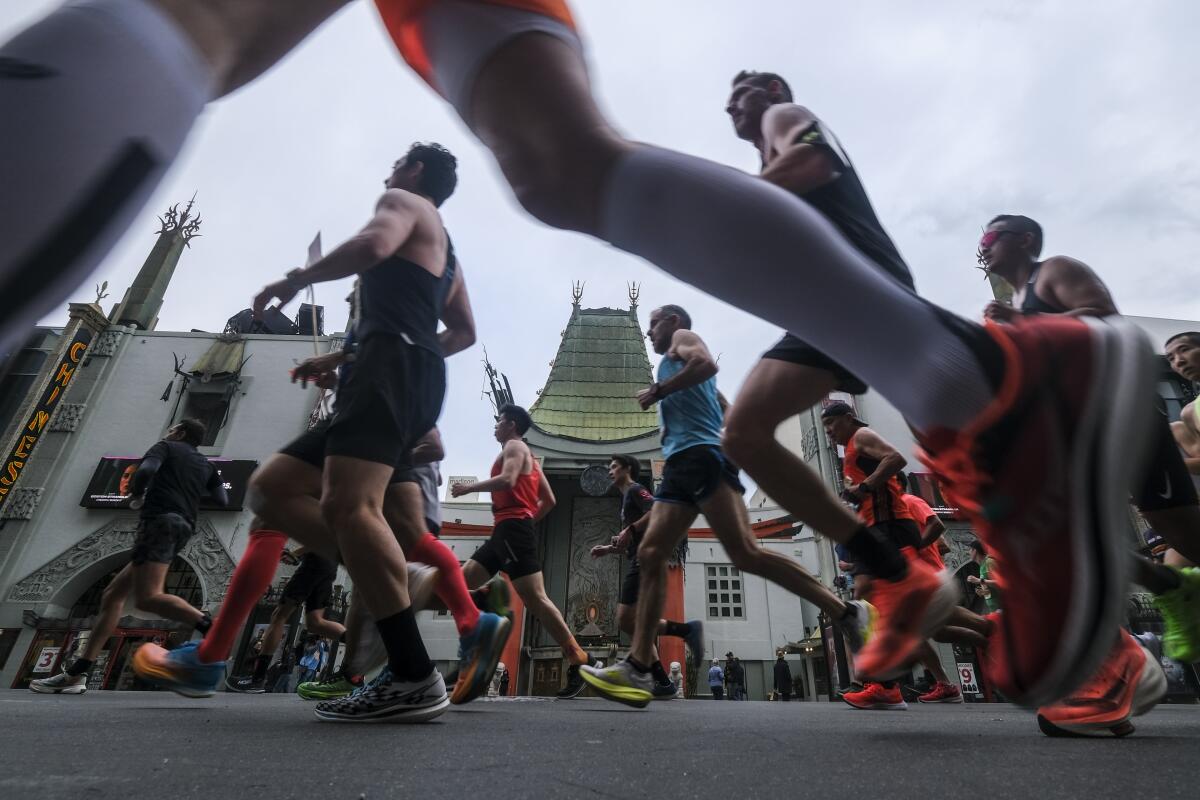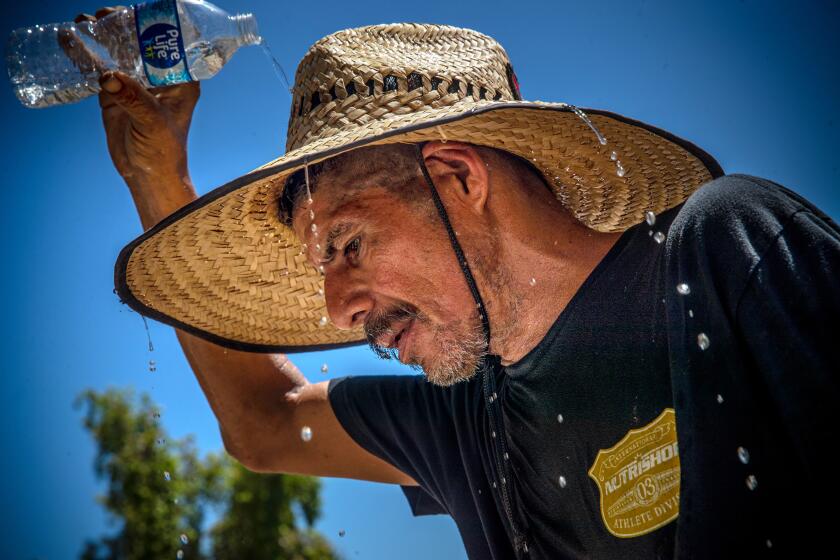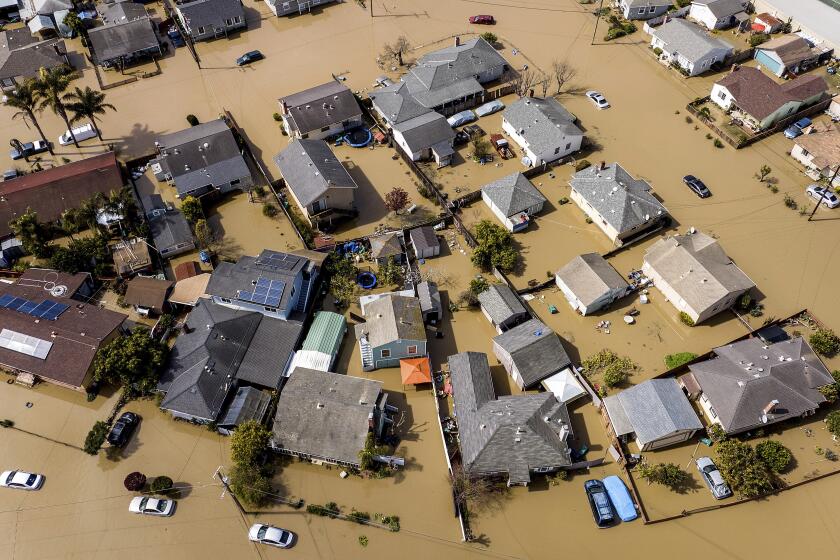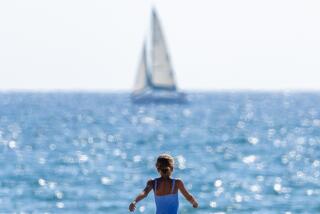Commentary: Moving to California allowed me to discover running. But the temperate climate is changing

- Share via
I spent most of the first 18 years of my life in Delhi, India, where it felt like the weather was out to get me. In the summers, it wasn’t uncommon for my friends to faint due to heatstroke in the scorching 110-degree heat.
When it rained, water puddles would give rise to new mosquito-borne diseases, and our school warned us to cover up to avoid mosquito bites. The winter smog meant that I would be poisoning my lungs if I so much as took a walk. It felt dangerous to exist outdoors. I thought I was “indoorsy” and preferred sitting inside, reading or watching TV, far away from forces of nature. And it wasn’t awful — giant malls and towering skyscrapers abound in my city. Visiting a pretty building was the most adventurous I wanted to get, at the time.
Moving to Northern California in 2021 helped me break out of that shell because I was finally in an environment that welcomed outdoor exploration.
There’s preliminary evidence that assigning categories and names to heat waves, like we already do with hurricanes, could help prevent deaths.
Suddenly, I loved running and being outside because the temperate climate made my body feel good when I exerted myself. California’s weather unlocked a whole new part of me. Running under the Californian sun wasn’t just exercise; it was liberation from the brick-and-mortar confines of my previous life.
However, I feel the specter of my past returning as the temperate California weather changes. Northern California started the year with uncharacteristically heavy rain and flooding, which meant that for months on end I could not enjoy the outdoors. My daily runs became sporadic, and I would anxiously check the weather report to know when it was dry enough to run again. And during the record-breaking heat wave this summer it was almost unbearable to run long distances, making me worried that I will lose the nature and the environment where I feel like I belong.
California is barreling toward a future where the outdoors might become inhospitable for children to play because of wildfire smoke, heat waves, storms and flooding.
Levee disasters like the one in the Monterey County community of Pajaro show the risks. Many in the Los Angeles Basin face similar dangers.
The toll this summer has already been pretty grim. At least seven park visitors in the U.S. Southwest — two in Death Valley — are likely to have died due to extreme heat exposure this summer. On the flip side, heavy storms over the winter caused so much damage to the roads in the San Gabriel Mountains that the Angeles Crest 100-kilometer race had to be canceled this year. In May, the Wild Wild West marathon and ultra races in Lone Pine were canceled, with runoff from this year’s record snowfall making the course impassable in some places.
In acknowledgment of the heating climate, the Bulldog 50K race held every summer in Malibu Creek State Park has recently introduced new measures to counteract the heat. Race organizers now place 2,000 pounds of ice all around the race course and have ice baths at the finish line. It is clear that our cherished outdoor events are under threat.
The warming climate is making runners slower. An analysis by the website RunRepeat in 2021 found that marathoners take, on average, 1 minute and 25 seconds longer to finish the race for every additional degree Fahrenheit. And heat is the leading weather-related killer.
That’s not actually good enough. The president must scale up his response to the climate crisis accordingly and follow through with bold new actions.
Larry Kalkstein of Applied Climatologists Inc. emphasizes how important it is to take global warming seriously as a runner. During intense heat waves such as the one Los Angeles experienced this summer, he says, it is essential to listen to warnings that advise residents to minimize outdoor activity and shelter indoors. Heat can be very dangerous, but, as Kalkstein says, “you don’t see the place ripped up during a heat wave like you do during a tornado, so people are fooled into thinking it doesn’t matter.”
The effects of climate change are becoming more and more evident every year. We have to act before it’s too late. Divest from fossil fuels, drive less and bike more; invest more money in sustainability technology and research. The reality is that there is no real solution to the environmental problems facing us today — yet. But that doesn’t mean that we can’t aim to live more sustainable lives now, and hope for a better tomorrow.
If California has taught me one thing, it’s the power of transformation — of self and of environment. Let’s harness that spirit. The future of our Golden State hinges on our actions today.
More to Read
A cure for the common opinion
Get thought-provoking perspectives with our weekly newsletter.
You may occasionally receive promotional content from the Los Angeles Times.














